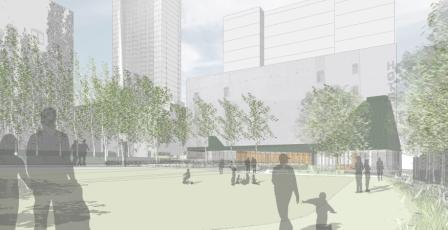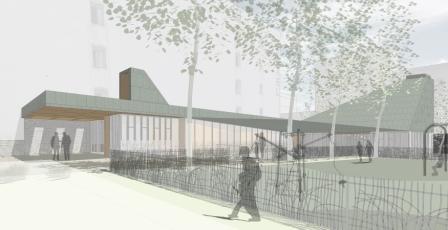

Printable PDF version
Subscribe to our newsletter
Climbing a Greecey Slope
Sustainable Sites Initiative
Construction Execution Services
Construction
Management Specialists
111 Pine Street, Suite 1315
San Francisco, CA 94111
(415) 981-9430
4361 35th Street
San Diego, CA 92104
(619) 550-1187
8538 173rd Avenue NE
Redmond, WA 98052
(206) 571-0128
www.TBDconsultants.com
Climbing a Greecey Slope
Geoff Canham, Editor
We seem to be on a slippery slope with the stock market, but how is the economy itself progressing, and what are the implications for the construction market? We take a look here at where we are now, as we dig ourselves out of the Great Recession.
LEED has brought focus on the green-building movement, and we now have LEED ratings for a number of building categories, including schools, retail, existing building, operations and maintenance (among others), as well as the original new construction category.

The development of the site is normally a very important part in achieving a LEED rating, and consequently landscape architecture has become a more important part of many projects. However, up to this point there has not been a specific green-construction rating system for landscape work, but that is changing with the introduction of the Sustainable Sites Initiative (www.sustainablesites.org).
This rating system is now starting a pilot program to test and evaluate the rating system over a two year period. With its sustainability goals, the initiative promotes carbon neutral sites, reducing energy use and encouraging carbon absorption. The initiative acknowledges that going green will sometimes add to the cost, and it encourages the use of life cycle costing to bring the benefits into the cost evaluation.

The Pilot Program has 250 total possible points, and awards Stars instead of the Certified, Silver, Gold, and Platinum levels that LEED uses. A site can get 1 star for achieving 100 points, 2 stars for 125 points, 3 stars for 150 points, or 4 stars for reaching 200 points
The following is a quick summary of the rating system for the pilot program:
- Site selection. 4 prerequisites and 21 points.
- Pre-design assessment and planning. 2 prereqs and 4 pts; engage users, neighbors, and other interested parties throughout the design process; do not change the site to degrade the neighboring environment; respect the existing environment and existing culture.
- Site design – water. 1 prereq and 44 pts; water supply is becoming a problem worldwide, so minimize use of potable water for irrigation.
- Site design – soil and vegetation. 3 prereqs and 51 pts; conservation of soils; avoid compacting soil; avoid materials that pollute soil; restore landscape areas affected by construction, but be careful where topsoil comes from to prevent robbing other sites of good soil; restore previously developed land for vegetative use where possible; build up the organic content in the soil.
- Site design – materials selection. 1 prereq and 36 pts; wise choice of vegetation and materials; maintain vegetation to prevent erosion; plants absorb carbon dioxide (a greenhouse gas); reuse as much of existing site as feasible
- Site design – human health and well-being. 1 prereq and 32 pts; design to support human health and well-being; encourage physical activity; maintaining the ecosystem brings tangible benefits, including cleaning the air, regulating the temperature, perhaps even providing food.
- Construction. 2 prereq and 21 pts.
- Operations and maintenance. 2 prereqs and 23 pts. Site Maintenance Plan needed.
- Monitoring and innovation. 18 pts; monitoring maybe over a number of years.
Certain prerequisites and credits may not apply to particular sites, and it is the intent of the credit that is really important rather than the specific words (specific conditions related to a site may make the specific implementation impractical or even damaging to the adjacent environment).

No new system can exist without its set of acronyms, so here are a couple of important ones for the Sustainable Sites Initiative:
VSPZ (vegetation and soil protection zone) – protect from damage by construction work, and only limited development work allowed within the zone.
SMP (soil management plan) – define how soil is to be protected and maintained during construction.
Renderings on this page provided by WRNS Studio, and are of Boeddeker Park, San Francisco, one of the Sustainable Sites Initiative pilot projects that we are working on.
Construction Execution Services
Rounding out our series on the GMP procurement method we look at services during the construction period, including scheduling, reporting, cost control, and change control.
Design consultant: Katie Levine of Vallance, Inc.